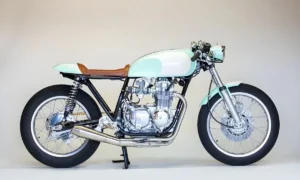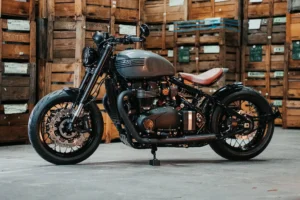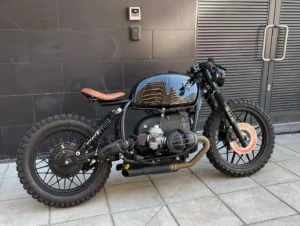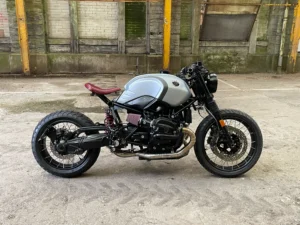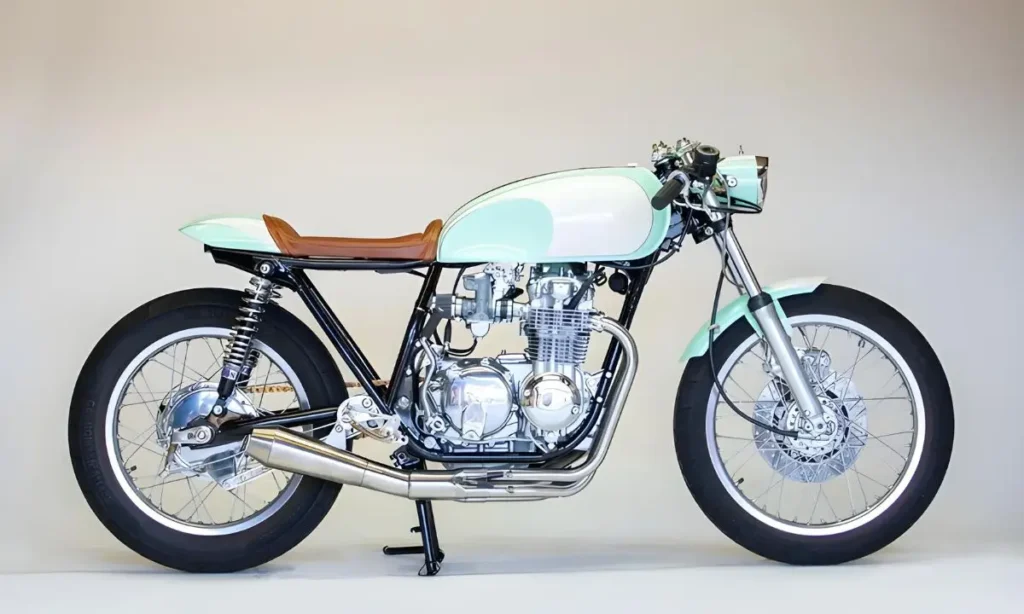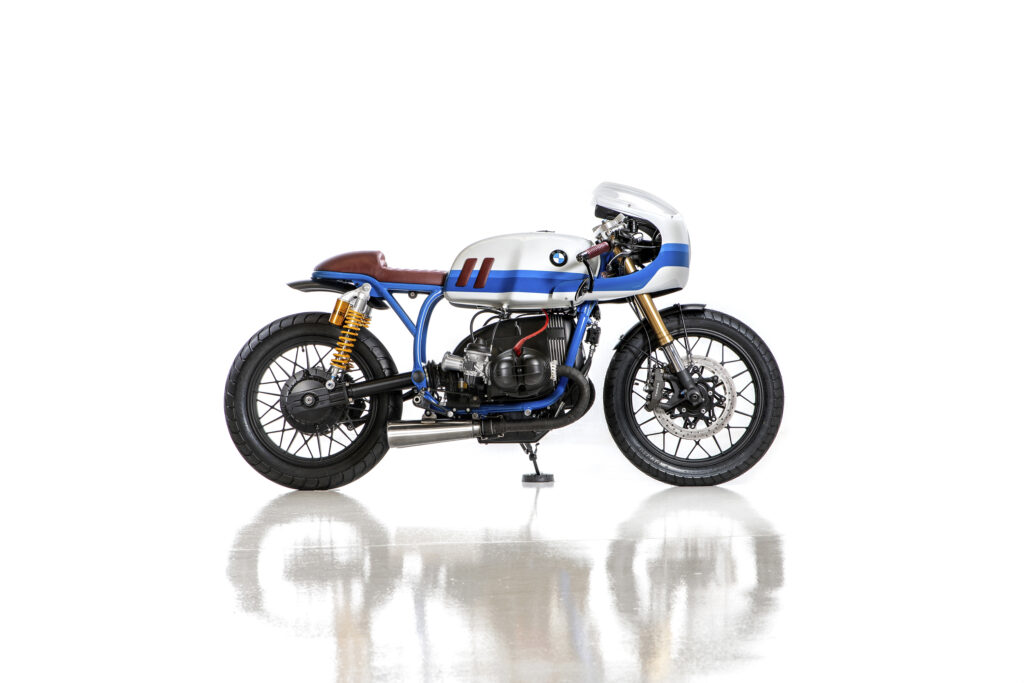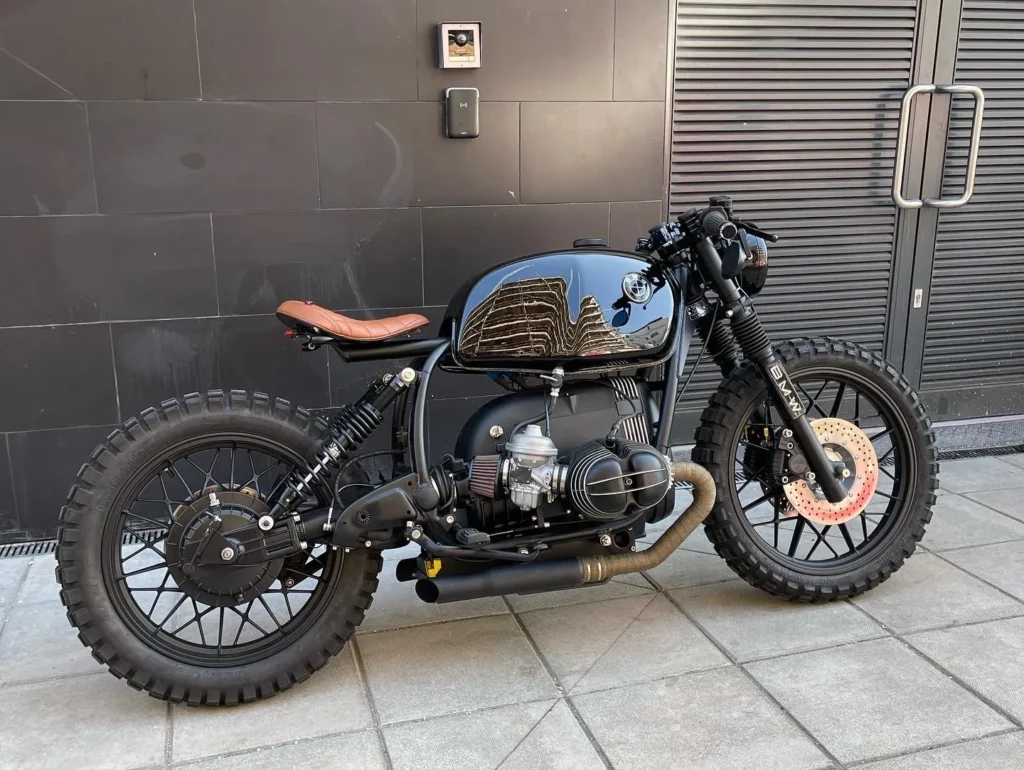Table of Contents
ToggleImproving fuel efficiency on a Honda café racer is not just about saving money. It’s also about extending the bike’s lifespan, reducing emissions, and getting smoother rides. Café racers, especially older models like the Honda CB350, CB550, or CB750, require more attention to small details that affect performance and mileage.
This guide will explain the key reasons your fuel consumption might be higher than expected. It will also show how to improve fuel economy through simple riding habits, basic maintenance, and small mechanical adjustments. Each section answers a specific question, helping you make informed changes without needing complex tools or professional help. Let’s begin with what affects fuel use most.
What Are the Main Factors That Affect Fuel Efficiency on a Honda Café Racer?
Several factors influence how much fuel your Honda café racer uses. Engine condition, riding habits, bike weight, and mechanical setup all work together. Understanding these basics helps improve fuel mileage without major modifications.
Engine Size and Condition
Smaller engines usually use less fuel. But an old or poorly maintained engine, even if small, can waste gas. Dirty parts, worn pistons, or old gaskets reduce performance. This increases fuel usage. A healthy engine burns fuel more efficiently. Regular oil changes and part replacements keep it running smoothly.
Riding Habits and Behavior
Aggressive riding increases fuel use. Quick starts, hard braking, and sudden throttle changes make the engine work harder. Gentle acceleration and steady speeds reduce strain. Lower strain means less fuel burned during each ride.
Bike Weight and Aerodynamics
Café racers often remove unnecessary parts to stay light. A lighter bike needs less power to move. Less power means less fuel burned. Aerodynamics also matters. Wind hitting a bulky or upright rider slows the bike. This resistance increases fuel use. A tucked position and narrow handlebars help air flow smoothly.
Mechanical Setup and Tuning
Incorrect carburetor settings or chain tension affects efficiency. If your carburetor sends too much fuel, the engine burns more than needed. A loose or tight chain adds friction, making the engine work harder. Small tuning mistakes cause large drops in mileage.
How Can You Adjust Your Riding Style to Improve Fuel Mileage?
Riding style affects how much fuel your café racer uses. Every movement you make while riding impacts engine effort. Less effort means less fuel burned. Small changes in riding behavior can lead to better mileage over time.
Throttle Control and Speed Management
Use the throttle smoothly. Quick twists waste fuel. Keep a steady hand. A stable throttle reduces unnecessary engine work. Sudden changes cause the engine to burn extra fuel. Ride at a moderate and constant speed whenever possible.
Gear Shifting and RPM Control
Shift gears early, but not too early. Stay in the right gear for your speed. High RPMs use more fuel. Riding in a gear that keeps the engine at a low, steady RPM saves gas. Listen to your engine. Change gears before it strains or revs too high.
Acceleration and Braking Habits
Start slowly from a stop. Avoid sudden acceleration. It uses extra power, which burns more fuel. When slowing down, use engine braking when safe. Hard braking wastes the energy used to move the bike. Smooth stops use less fuel and keep parts in better condition.
What Regular Maintenance Tasks Help Maximize Fuel Efficiency?
Routine maintenance helps your Honda café racer use less fuel. A well-maintained bike runs better, lasts longer, and burns less gas. You don’t need advanced tools. Simple checks and cleanups done often can keep fuel use low.
Tire Pressure Checks
Low tire pressure increases rolling resistance. This means the engine needs more power to move the bike. Check tire pressure every two weeks. Use a reliable pressure gauge. Inflate to the level recommended by the manufacturer. Proper pressure helps the bike roll easily and burn less fuel.
Air Filter Cleaning or Replacement
A dirty air filter blocks airflow. The engine then works harder to breathe. This leads to poor fuel burn and high fuel use. Inspect the filter every 1,000–2,000 km. Clean it if it’s dusty. Replace it if it’s too worn or clogged. A clean filter lets in more air, helping the engine burn fuel efficiently.
Spark Plug Condition
The spark plug starts the fuel burn. A weak spark leads to incomplete combustion. This wastes fuel. Check the spark plug every few months. If it looks dark or worn, replace it. Use the correct spark plug type for your engine model. A strong, clean spark means better fuel use.
How Do Carburetor Adjustments Affect Fuel Usage?
The carburetor controls how much fuel mixes with air before entering the engine. If the mix is too rich, more fuel burns than needed. If it’s too lean, the engine may struggle or overheat. A correct air-fuel mix is key to better mileage and smooth engine performance.
Setting the Right Air-Fuel Mixture
Adjust the mixture screw slowly. Listen to the engine as you turn. The goal is to find the point where the engine runs steadily with the least amount of fuel. A balanced setting gives strong power without wasting gas. Always adjust when the engine is warm and the bike is idle.
Signs of a Rich Carburetor
Dark exhaust smoke, engine sputtering, and strong fuel smell are common signs. Rich means too much fuel. It lowers fuel efficiency and dirties spark plugs. If your café racer shows these signs, the carburetor needs fine-tuning.
How to Lean the Mixture Safely
Turn the fuel screw out slightly, one small step at a time. Go slow. Test the engine sound after each adjustment. Avoid running it too lean. A lean mix can damage engine parts by creating extra heat. Use caution. If unsure, ask a local mechanic or refer to the bike’s manual.
What Are the Best Low-Cost Mods to Boost Fuel Efficiency?
Small upgrades can make your café racer more fuel-efficient. These changes are affordable and easy to install. They help reduce drag, improve engine performance, and lower fuel use. Each mod supports the goal of better mileage without heavy customization.
Changing Sprockets for Better Gear Ratios
Installing a larger front sprocket or a smaller rear sprocket reduces engine RPM at cruising speeds. This means the engine works less while maintaining the same speed. Less effort equals less fuel used. The change is simple and does not affect the classic café racer look.
Upgrading to Fuel-Efficient Tires
Some tires have a lower rolling resistance. This allows the bike to move with less energy. Less energy use means better fuel efficiency. Choose tires that are narrow, lightweight, and rated for low resistance. Make sure they still fit safely on your current rims.
Switching to LED Lighting
Traditional bulbs use more power from the electrical system. LED lights use much less. While lighting may not directly burn fuel, reducing electrical load supports the overall system. Lower load can improve alternator performance and reduce engine drag in small but helpful ways.
How Does Reducing Bike Weight Improve Fuel Efficiency on a Honda Café Racer?
Lower weight helps your café racer use less fuel. A lighter bike needs less engine power to move. Less power means less fuel burned. Reducing weight does not always require removing major parts. Focus on items that add bulk without adding function.
Removing or Replacing Heavy Parts
Some stock parts are heavy and not essential. For example, old steel fenders, thick seats, and large side covers. Replace them with lighter materials like aluminum or fiberglass. Choose compact and simple parts. They give the bike a clean café racer style and reduce total weight.
Estimating Fuel Savings from Weight Reduction
Every 5 to 10 kg removed can slightly increase fuel mileage. The difference may not seem large in short rides, but it adds up over time. Less weight improves acceleration and allows the engine to work at a lower load. This helps reduce fuel use during city and highway rides.
Carrying Less Gear on Daily Rides
Extra tools, heavy bags, and unused accessories add weight. Keep only what you need. For short trips, leave heavy backpacks or cargo at home. Lighter loads make the bike handle better and use less fuel. It also reduces stress on tires and suspension.
Focus on safe and smart weight reduction. Do not remove any part that affects safety or structure. Small changes done carefully will improve fuel use without harming the ride quality.
How Do You Track and Measure Fuel Efficiency Accurately?
Tracking fuel efficiency helps you see if your changes are working. It also helps you plan better rides and catch problems early. Accurate tracking gives real data. This lets you make smart decisions based on facts, not guesswork.
Calculating Mileage Manually
The easiest way is to use the trip meter. Reset it every time you fill up the tank. Note how many kilometers you ride before the next fill. Divide the distance by the liters used. This gives your fuel efficiency in km per liter. Always fill the tank to the same level for best accuracy.
Using Mobile Apps for Tracking
Many apps help record fuel data. You enter the kilometers and liters at each fill-up. The app shows trends over time. Some apps also track cost and reminders for maintenance. Choose one with a simple layout and support for motorcycles.
Setting a Regular Tracking Routine
Make tracking a habit. Record data after every fuel stop. Check for big changes in mileage. If you see a drop, check tire pressure, air filter, or riding habits. Consistent records help you spot problems early and fix them before they waste more fuel.


